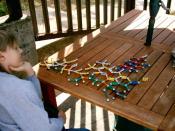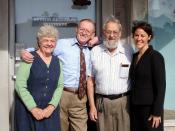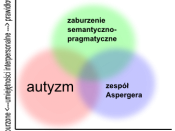J., is a six-year-old African American boy, who was diagnosed as autistic when he was three. He will not look you in the eye, gets angry when his parents do not pick him up on time, (to the point of hurting others), and is for the most part non-verbed except to occasionally repeat what others say called echolia (taken from observation, 2002).
Tommy is a fifth grader, white male who is on the honor role loves math and science, and is an expert on transforming toys, in fact he is so fascinated by them that at any time he may "transform" himself into one. When he was three he had fluent language, but could not understand the rules of reciprocal conversation, and could not look others in the eye (Less: 2002) Tommy has Asperger's Syndrome, a mild form of autism.
What is autism? What causes autism? Is there a cure for autism? For many years health care professionals have been researching to try and find an answer to many questions about autism.
Still at this time there is no definite answer. It has been found that autism can also be diagnosed as Persuasive Development Disorder or PDD (National Institute Of Neurological Disorder, 2002). PDD is a generic term that refers to a group of disorders that are characterized by delays in the development of multiple basic skills. These skills include such things as reciprocal social interactions, verbal and non-verbal communication, and certain stereotyped patterns of behavior (Szatmari, 2002). Other categories include Autism, Asperger's Syndrome, Rett's Syndrome, and PDD not otherwise specified (PDD-NOS) (National Institute of Neurological Disorders, 2002).
Children with PDD vary widely in their abilities, intelligence, and behavior. A child who is diagnosed with PDP may not speak at all (National Institute of Neurological disorders, 2002). Discovering the child's...


